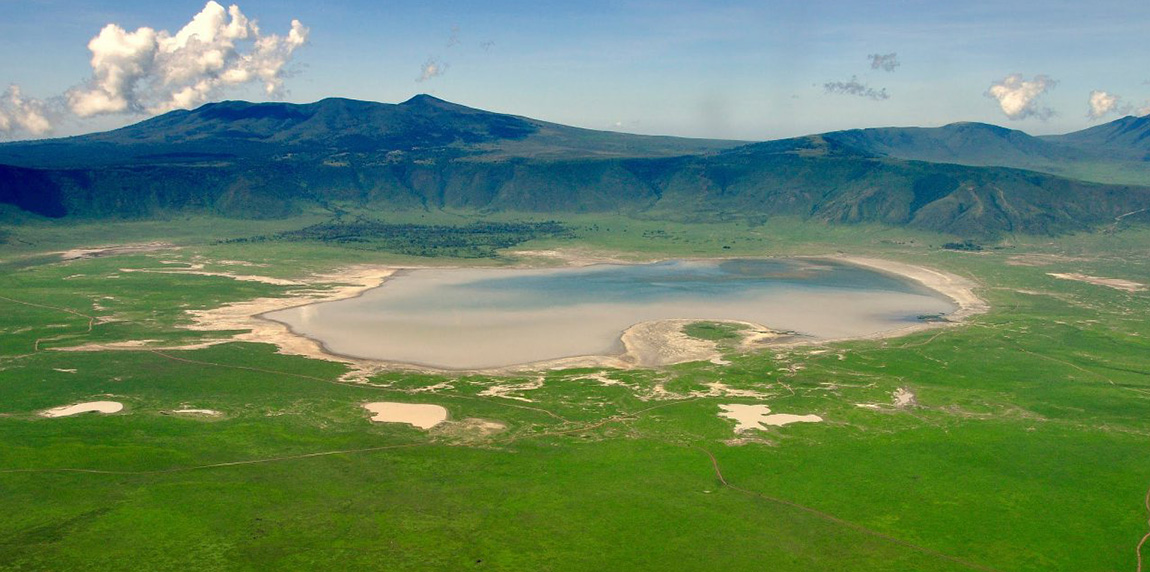Ngorongoro Crater, A world heritage site, found in the Arusha region, has a number of exceptional sights. Primarily the vast amount of wildlife, which is rich and diverse, due to the changing climate and landscape, creating many different ecosystems and ecological niches.
Another key and significant feature found in the conservation area is the Olduvai Gorge. It is monumental in historic significance, when it comes to understanding human evolution. There is fossil evidence found here, which determines that the area has been home to many hominid species for the last three million years. There is an Olduvai Gorge museum nearby, where these fossils, as well as stone tools and skulls of extinct animals which once resided in the gorge can be discovered.
The Ngorongoro crater itself is the wold’s biggest intact Caldera, formed by a volcanic eruption three million years ago, and is 610 meters deep and expands over 260 square kilometers of floor area. The dreamlike natural landscape is home to about 25,000 animals. These consist mainly of hoofed mammals, and a dense population of lions. The primary source of water in the crater is sourced from the Munge stream, creating a salt lake in the middle of the crater, called either Marat or Magadi Lake; its name essentially meaning salt. Another important water source, comes from the Ngoitokitok spring, forming a massive swamp, known as Goringop swamp, which also features a picnic site.
Yet another historical site can be seen at the Nasera rock, which a 50 meter high inselberg, 20 kilometers from Olduvai Gorge, in the Gol Mountains. Its name derives from the Maasai word “Naasira,” meaning striped, and features ancient drawings done by the Maasai, when it was used centuries ago as a hideout.
Not to be missed, the Northern Highland Forest Reserve, a lush forest within the conservation area, consisting of elephant caves and abundance of bird species and wildlife, and the Endorro waterfalls; flowing 40 meters from the crater rim and receiving its water from natural springs. This forest is ideal for hikes, walking safaris, bird watching, taking in the beautiful waterfalls, and getting a glimpse of the unique caves; created by elephants digging their tusks into hills, to benefit from the rich minerals found in the soil.
One more captivating attraction would be the Shifting Sands, formed by volcanic ash from the active volcano, Oldoinyo Lengai. This is one of the world’s most incredible shifting ash dunes, 5 meters in height and 100 meters long, and can be located 2 kilometers from the bank of Olduvai Gorge. Incredible, the extremely magnetic ash is what keeps the dunes together and prohibits sand particles from being swept up by the wind.
